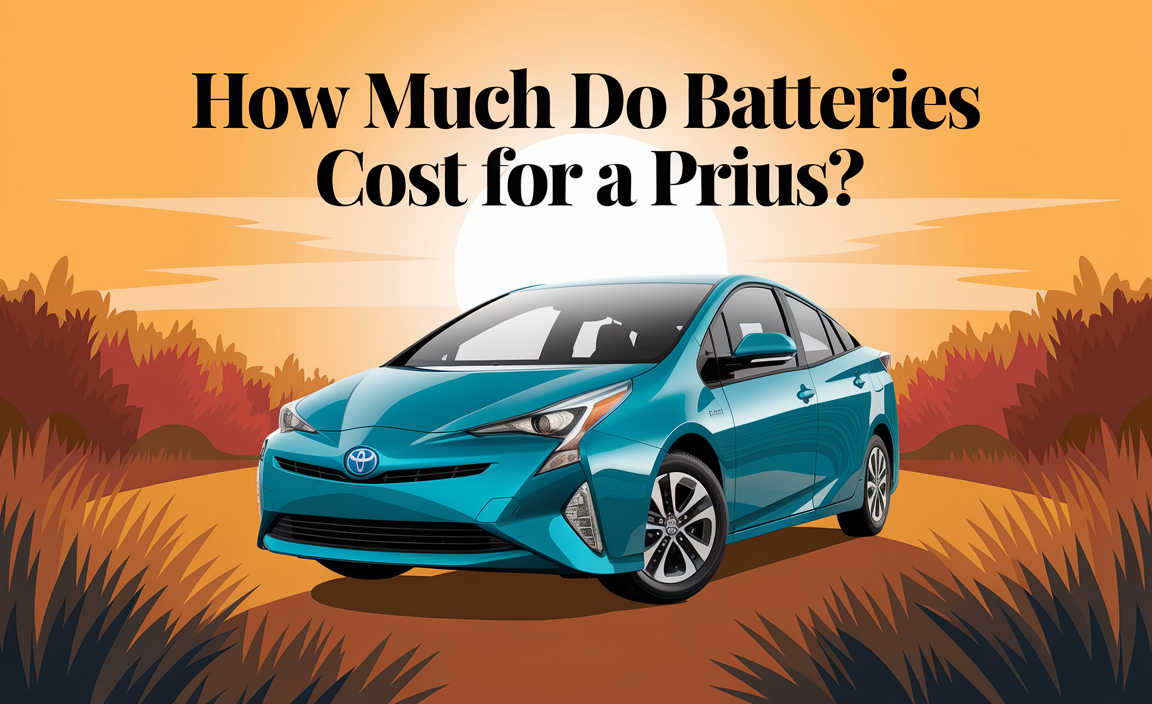A battery heater for your truck is essential gear for cold weather, ensuring reliable starts and extending battery life by keeping it at an optimal operating temperature. Easy to install and use, it’s a smart investment for any driver facing winter.
Brrr! Is your truck struggling to start when the temperature drops? You’re not alone. Cold weather is tough on truck batteries, making them weaker and more prone to failure. That “clunk, clunk, clunk” sound when you turn the key can be frustrating and even leave you stranded. But what if there was a simple solution to keep your truck’s battery happy and ready to go, no matter how cold it gets?
Introducing the battery heater for your truck – a game-changer for winter driving. It warms your battery, making it easier for your truck to start and helping your battery last longer. Think of it like a cozy blanket for your battery on a chilly night. This guide will walk you through everything you need to know about battery heaters, why they are so important, how they work, and how to get one for your truck, making winter starts a breeze!
Why Your Truck Battery Needs a Little Warmth
Truck batteries are workhorses, powering everything from your engine to your lights and radio. But when the mercury plummets, their performance takes a serious hit. Cold temperatures can significantly reduce a battery’s cranking power. This means the electrical energy needed to turn over your engine becomes much harder to deliver.
Have you ever noticed that your car or truck starts slower on a cold morning? That’s your battery feeling the chill. In very cold climates, a battery can lose up to 50% of its starting power at 0°F (-18°C). Below that, it gets even worse! This sluggishness is a warning sign that your battery is under stress.
Beyond just starting issues, extreme cold can also damage your battery. The chemical reactions inside a battery slow down in the cold. If the battery isn’t fully charged, this can lead to freezing of the electrolyte, which is water-based. Frozen electrolyte can crack the battery case, causing leaks and rendering the battery useless.
The Impact of Cold on Battery Health
- Reduced Cranking Power: The engine needs a lot of juice to start, especially in the cold. A cold battery simply can’t provide as much power, leading to slow or no starts.
- Increased Risk of Freezing: If your battery isn’t fully charged, the water in the electrolyte can freeze. This is like freezing a bottle of water – it expands and can break the battery’s casing.
- Shorter Lifespan: Constantly battling the cold puts extra strain on your battery. This can lead to it wearing out faster than it normally would.
- Weakened Performance: Even beyond starting, a cold battery might struggle to power other electrical components reliably.
What is a Battery Heater for Your Truck?
A battery heater for your truck is a device designed to keep your truck’s battery at a more optimal temperature during cold weather. It’s essentially a small heating element that, when powered, gently warms the battery. This ensures that the battery remains efficient and capable, even when the outside temperature is well below freezing.
These heaters come in various forms, but the most common types are pad heaters and pad and cable heaters. Pad heaters are strips or mats that stick to the battery, while pad and cable heaters often include an insulated cable that wraps around the battery for more even heat distribution. They are usually powered by plugging into a standard household electrical outlet (connected via an extension cord to your garage or driveway, if available) or sometimes by your vehicle’s electrical system when the engine is running (though the former is more common for pre-heating). Think of it as a personal, low-power blanket that keeps your battery from getting too cold.
How Do They Work?
Battery heaters work on a simple principle: applying gentle, consistent heat. The heating element, often a resistive wire embedded in a durable material, generates warmth when electricity flows through it. This warmth is then transferred to the battery case and, subsequently, to the battery’s internal components.
The goal isn’t to make the battery hot, but to keep it just warm enough to maintain its chemical activity. This optimal temperature range is typically above freezing and within the manufacturer’s recommended operating range for best performance. Many battery heaters are thermostatically controlled, meaning they only turn on when the temperature drops below a certain point, saving energy and preventing overheating.
Common Types of Battery Heaters
- Pad Heaters: These are flat, flexible heating elements that adhere to the bottom or side of your battery. They are designed to transfer heat directly to the battery case.
- Pad and Cable Heaters: These systems often combine a pad heater with a specially designed insulated cable that wraps around the battery. This provides more comprehensive and even heating.
- Battery Blankets: Some systems are more like full battery wraps or blankets, offering substantial insulation along with a heating element.
The Benefits of Using a Battery Heater
Using a battery heater isn’t just about convenience; it’s about proactively protecting your truck and ensuring its reliability. The benefits extend beyond simply getting your engine started on a cold morning.
Reliable Starts in Any Weather
This is the primary benefit. When your battery is kept at a stable, warmer temperature, its ability to deliver the necessary amperage for starting is maintained. This means no more struggling to turn over the engine when it’s frigid outside. You can count on your truck to start every time.
Extended Battery Lifespan
Cold weather is a major stressor for batteries. The constant effort to perform in low temperatures, combined with the risk of freezing, can significantly shorten a battery’s lifespan. By keeping the battery warm and its electrolyte from freezing, a heater helps it last longer, saving you money on premature replacements.
Protection Against Freezing
As mentioned, a deeply discharged battery in freezing temperatures is at risk of internal freezing. This can cause irreparable damage. A battery heater, especially when plugged in overnight, ensures the battery remains warm enough to prevent the electrolyte from freezing, safeguarding it from potentially catastrophic damage.
Improved Electrical System Performance
A warmer battery doesn’t just start the engine better; it also powers your truck’s electrical systems more effectively. This includes headlights, radios, and any other accessories that draw power from the battery, particularly when the engine isn’t running at full charging capacity.
Cost Savings
While there’s an initial investment for a battery heater and a slight increase in electricity usage, the long-term savings can be substantial. You’ll avoid costly jump-starts, potential towing fees, and the expense of replacing a battery that failed prematurely due to cold weather damage. Plus, the peace of mind is priceless!
Choosing the Right Battery Heater for Your Truck
Not all battery heaters are created equal. When selecting one for your truck, consider a few key factors to ensure you get the best fit for your needs and your vehicle.
Size and Fit
Truck batteries come in various sizes (Group sizes like 31, 65, 24F, etc.). The heater you choose must be designed to fit your specific battery dimensions. Most manufacturers will list the compatible battery group sizes. Measure your battery or check your owner’s manual if you’re unsure.
Wattage and Heating Power
Heaters come with different wattage ratings. Higher wattage generally means more heat, but also more power consumption. For most truck applications in typical winter climates, a heater in the 75-150 watt range is usually sufficient. Avoid overly powerful heaters that could potentially overheat the battery if not properly regulated.
Durability and Weatherproofing
Your truck’s engine bay can be a harsh environment, with exposure to moisture, oil, and vibration. Choose a heater made from durable, weather-resistant materials that can withstand these conditions. Look for models with robust wiring and secure connectors.
Installation Method
How easily can the heater be installed? Most pad-style heaters use automotive-grade adhesive. Ensure the surface of your battery and the heater are clean for a strong, lasting bond. Some might come with ties or straps for extra security.
Thermostatic Control
Look for heaters with built-in thermostats. These automatically turn the heater on when the battery temperature drops below a preset level (usually around 30-40°F or 0-5°C) and turn off when it warms up. This is more energy-efficient and safer than a heater that runs continuously.
Brand Reputation and Reviews
Stick with reputable brands known for quality automotive accessories. Read customer reviews to get real-world feedback on performance, durability, and ease of installation.
Installing a Truck Battery Heater: A Step-by-Step Guide
Installing a battery heater is typically a straightforward DIY task. Safety is paramount, so always follow these steps carefully. If you’re ever unsure, consult a professional mechanic.
What You’ll Need
- Your chosen battery heater kit
- Wire brush or stiff brush
- Rubbing alcohol or degreaser
- Clean cloths or rags
- Gloves (recommended)
- Safety glasses (recommended)
- Optional: Zip ties for cable management
Safety First!
Before you begin, ensure your truck’s engine is off and has cooled down. Batteries can contain corrosive acids and produce flammable gases, so wear your safety glasses and gloves. Never smoke or create sparks near a battery. Disconnecting the negative battery terminal first can add an extra layer of safety, though for simple heater installation, it’s often not strictly required if you are careful. If you do disconnect, remember you might need to reset some vehicle systems afterward.</p ettlement





